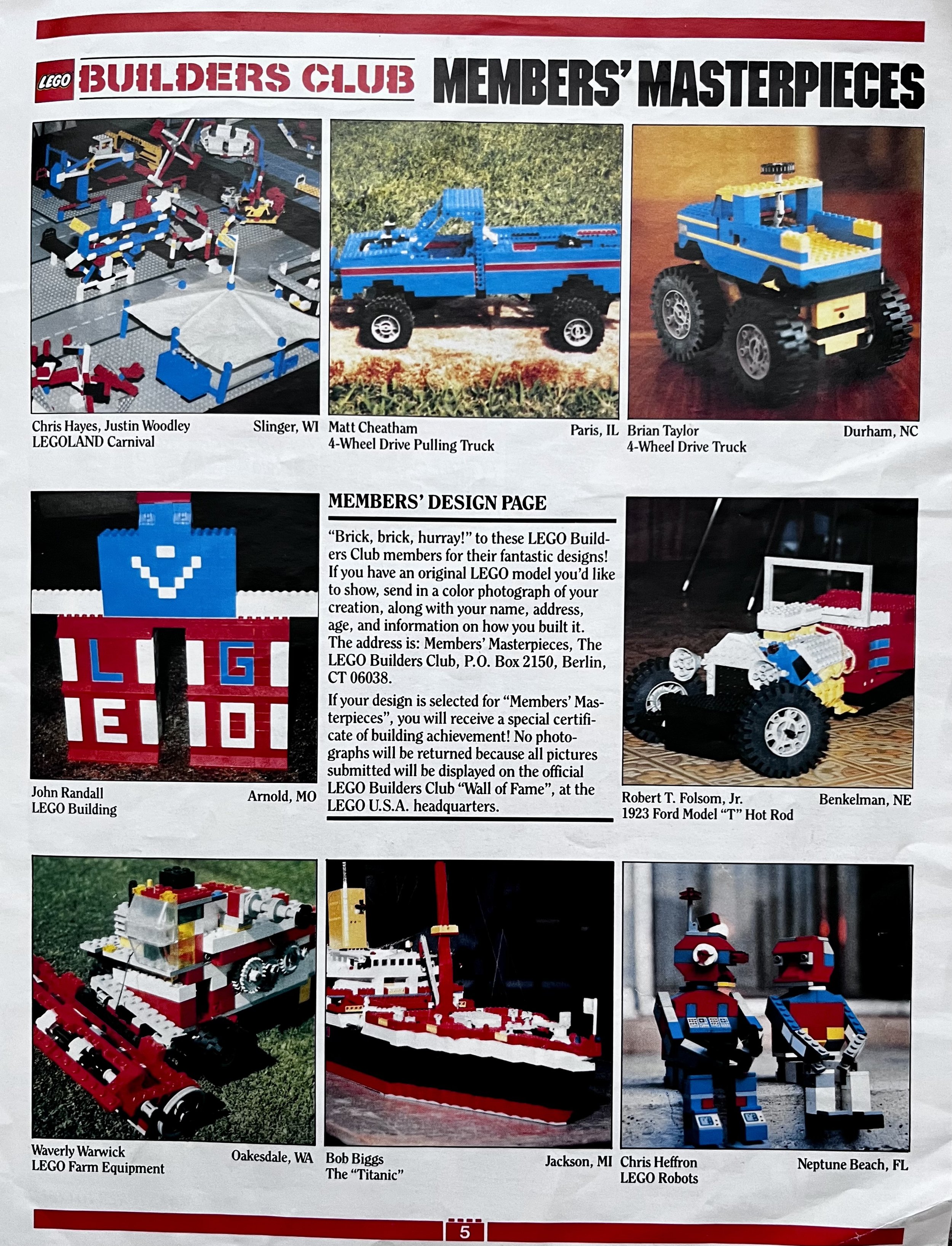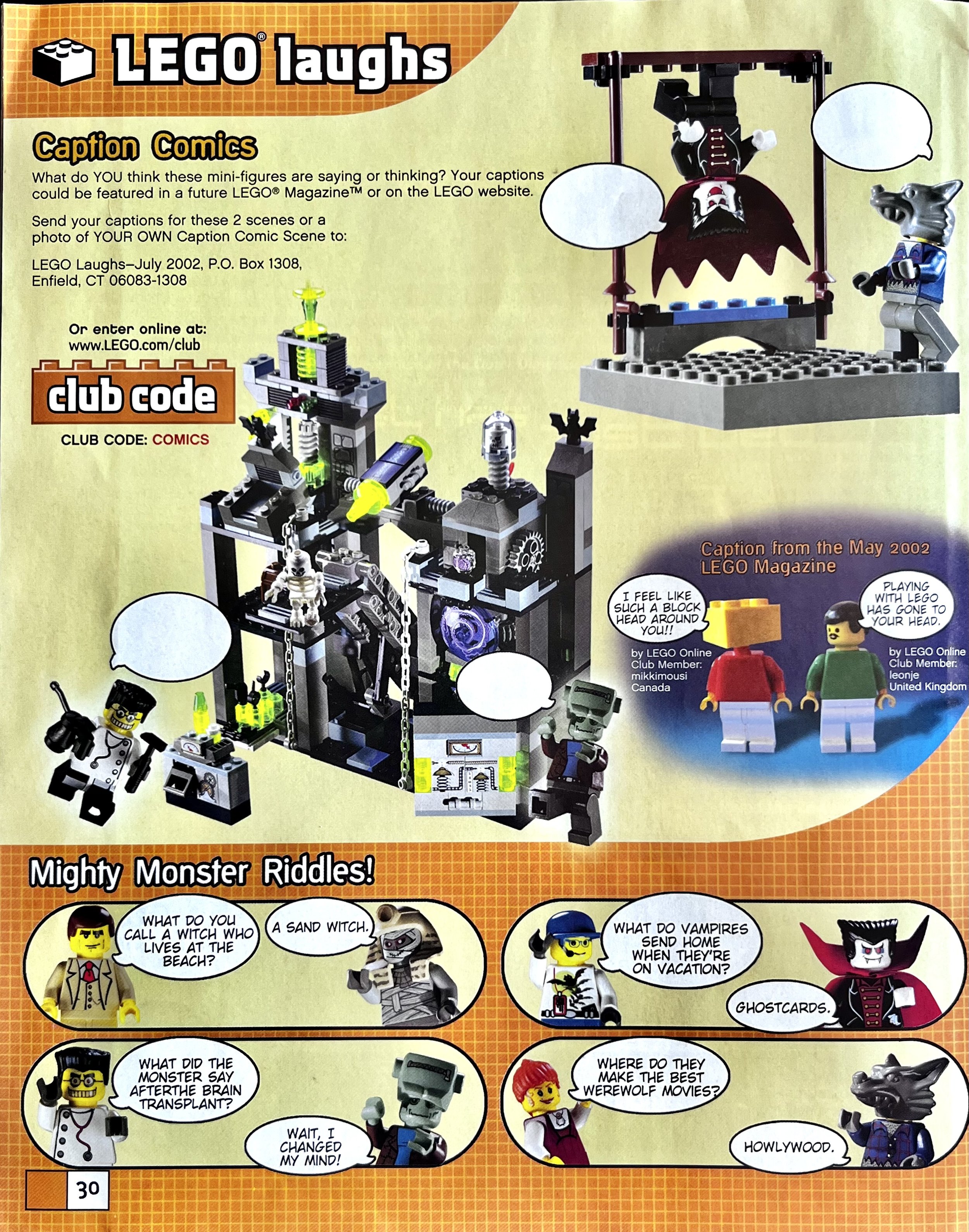Where Did LEGO Fan Mail Go? Remembering The Amazing Redini
/One of the small joys I had as a kid was going to check the mail for any letters, packages or LEGO catalogs sent to me. Granted, it was very rare that I ever received anything (save for the catalogs), but there was excitement in the potential of receiving something in the mail. That excitement was doubly so when I knew that I was anticipating something.
[Source: Brickset]
In a world where communication via text messaging and social media is instantaneous, and delivery services that guarantee one to two-day shipping straight to your front door encourage instant gratification, small joys like walking to the mailbox in anticipation of a letter or package are a rarity.
Much in the way these small joys have gone to the wayside in the modern world, so too has a means of interaction once commonplace between fans and the companies they follow: fan mail. Major comic book publishers for decades had a fan letters section, allowing avid readers to see their questions for creators and criticisms of the work both responded to and published. Newspapers had—and to some extent still have—editorial columns, an open forum for readership to interact with their news outlet of choice.
The LEGO Group also had their own means of interaction with customers helmed by one Susan Williams from the 1970s into the 1990s, whom you can read about in this article by fellow BrickNerd writer John Cooper. But in this article, we’ll look at a very short-lived feature of The LEGO Group’s magazine publication in the early 2000s, “Mailbag,” as well as its mascot and host, The Amazing Redini.
What Happens To All The Mail?
Highlighting the creativity of LEGO fans has been a staple, if not the crux of the company’s many fan-centered publications. Bricks n’ Pieces and Brick Kicks both dedicated much of their page space to the work of talented kids and adult fans of LEGO. This was the first way to share your creations! However, questions dedicated to the behind-the-scenes workings were not published (at least in the US) until the end of LEGO Mania Magazine’s run.


“LEGO Mailbag” had no distinguished icon or mascot, save for a yellow mailbox that, if you grew up with LEGO Club TV, looked very similar to the host of Cool Creations: Flappy (who we’ll look at some other time).
LEGO Mania Magazine May-June 2001, Source: Internet Archive
The questions published in “LEGO Mailbag” were rather simple, revolving around the history of The LEGO Group, the workings of LEGO.com, and general trivia. While a segment like “Mailbag” might seem rather trivial today, I’m sure this aspect of the magazine (far before official RLFM or any LEGO social media) gave young fans of LEGO access to a side of the company otherwise unfamiliar to them.
The Life and Wit of The Amazing Redini
With the consolidation of the numerous LEGO fan magazines across the globe into LEGO Magazine in 2002, there came a total rehaul of the aesthetics of the magazine. No longer was it trapped in the often garish and clashing colors and sensibilities of the 90s. A far cleaner and consistent look for the dawn of the new millennium defined the LEGO Magazine—it recalls to my mind a far simpler time I long to return to, but that’s simply my nostalgia talking.
But this time, “Mailbag” returned with a new host: The Amazing Redini!


Written by then chief editor Greg Farshty (who would later be known for his work on Bionicle), Redini brought a lot of charm to the “Mailbag” segment. Responses to fan questions were met with informative and equally silly or witty answers, including my favorite: Redini describing the location where LEGO Magazine is created. It’s an amusing, long-winded response with a tinge of dry humor that doesn’t even legitimately answer the question. I love it.
Redini’s job of answering fan questions was not limited to the publication. LEGO.com also hosted questions answered by Redini in the same vein as those found in bi-monthly issues of LEGO Magazine.
Redini’s “Mailbag” segment was a staple of LEGO Magazine until he seemingly disappeared entirely with the May 2003 issue. Redini returned again in the January 2004 issue, though the July 2004 issue of Magazine marked his final appearance.
LEGO Magazine July-August 2004, Source: Internet Archive
Redini’s Unstable Role in An Unstable Company
The Amazing Redini did not stick around for long. Roughly two years in a bi-monthly publication does not generate much staying power for a mascot—and that’s without a hiatus like Redini’s.


The inconsistency of Redini’s appearance in LEGO Magazine is reflective of the period of The LEGO Group’s history in which he was created. In response to declining sales and in an attempt to remain relevant in the toy industry throughout the late 1990s and 2000s, The LEGO Group developed numerous short-lived, unsuccessful product lines; failed attempts at innovation; and inconsistent promotional material and campaigns with very little staying power.
The company had both lost sight of the principles and values that made them a strong brand throughout the 1970s and 80s and suffered great financial losses in both 2002 and 2003 which threatened the company’s very existence.


At the end of its life, LEGO Magazine, much like the company as a whole, was in a better place. The design sensibilities and features of the magazine by that point were consistent from issue to issue which made the rebranding into LEGO Club magazine rather seamless. Max—who was already appearing in the publication prior to the rebranding (and was not involved in BrickNerd’s April Fools joke)—became the official mascot for the magazine and LEGO Club as a whole. After 16 years (oh gosh it’s been that long), he’s still going strong and is now the figurehead for LEGO Life, the current iteration of the magazine.
This can not be said for the Amazing Redini or any of the other strange elements of LEGO magazines from the early 2000s like “LEGO Laughs” and “LEGO Super Showdown,” neither of which got past the first few issues of LEGO Magazine (though “LEGO Laughs” would later exist in the form of “Comic Captions” on the LEGO Club website in the late 2000s).


The Amazing Redini, as charming as I might find him to be, did not find a place amongst other well remembered mascots of The LEGO Group. The role that “Mailbox” played in the magazine would inevitably be made superfluous with the internet as a resource for information. There’s no need for Redini today when the simple questions about The LEGO Group’s history or workings can be answered with a quick search.
But even if Redini’s role in the magazine is irrelevant today, his wit and charm are certainly irreplaceable in The LEGO Group’s history.
Were you reading LEGO Magazine in the early 2000s? Do you remember Redini? What other strange or short-lived elements of LEGO magazines do you recall? Let us know in the comments below!
Do you want to help BrickNerd continue publishing articles like this one? Become a top patron like Charlie Stephens, Marc & Liz Puleo, Paige Mueller, Rob Klingberg from Brickstuff, John & Joshua Hanlon from Beyond the Brick, Megan Lum, Andy Price, Lukas Kurth from StoneWars, Wayne Tyler, Monica Innis, Dan Church, and Roxanne Baxter to show your support, get early access, exclusive swag and more.























